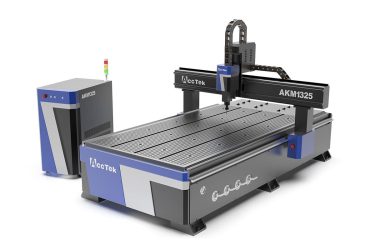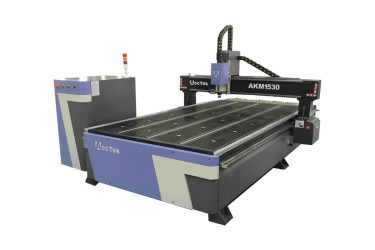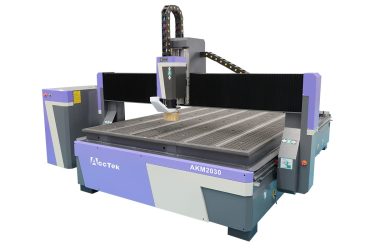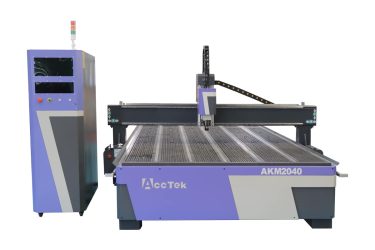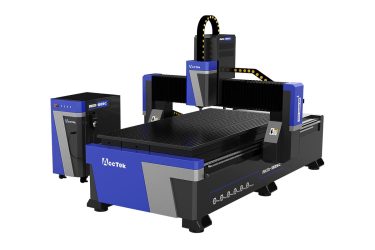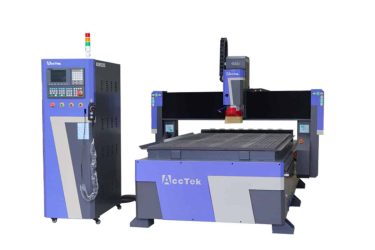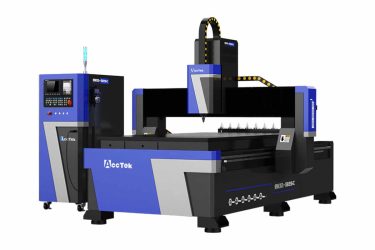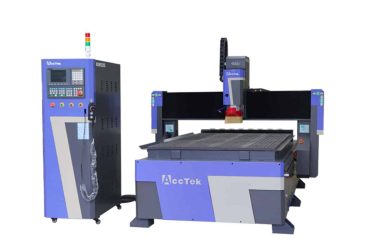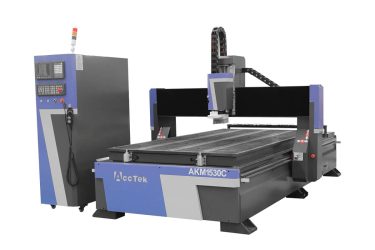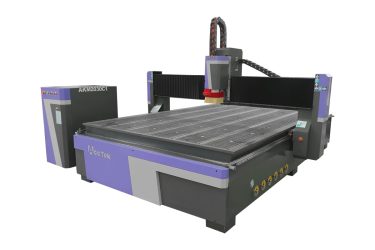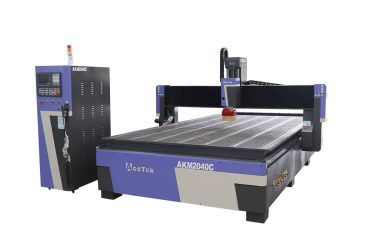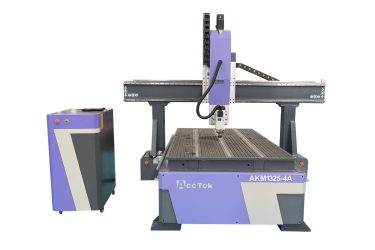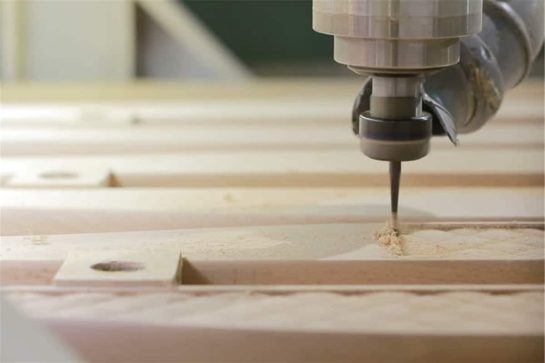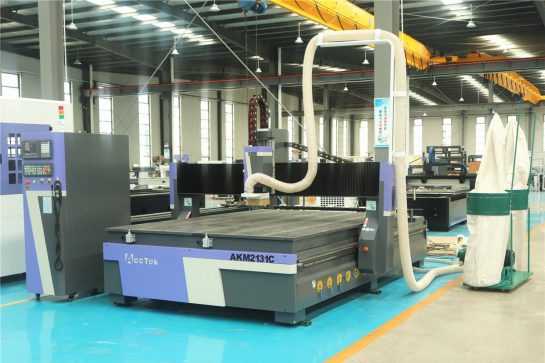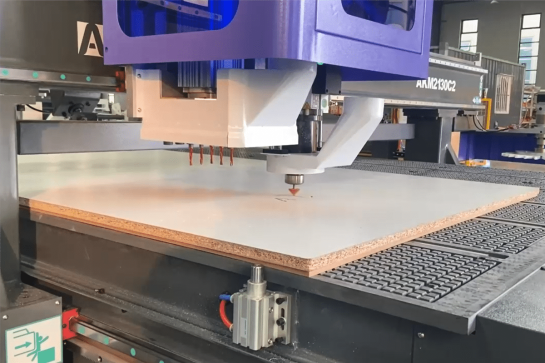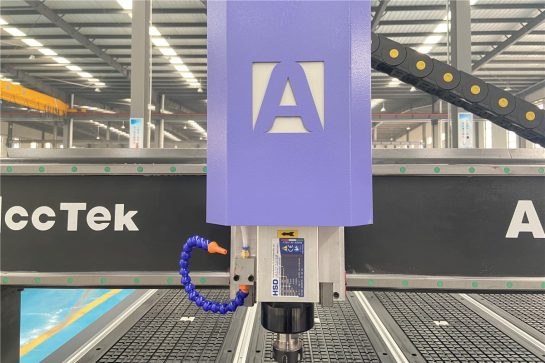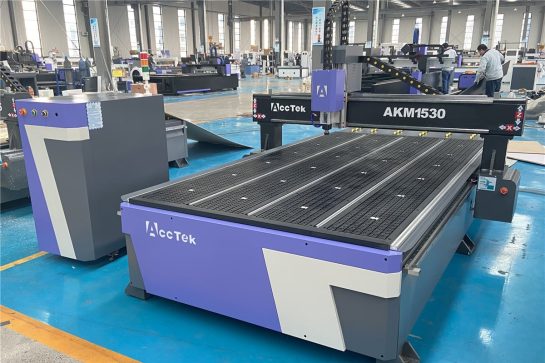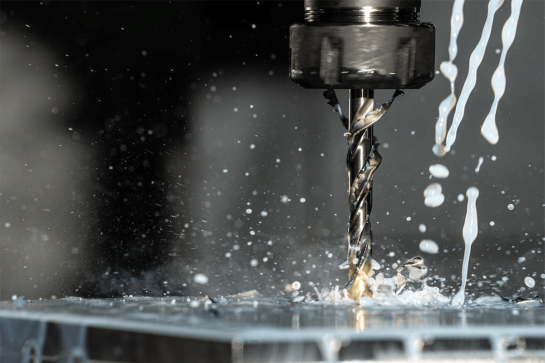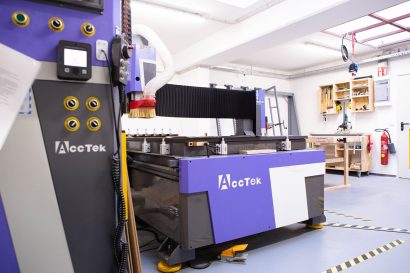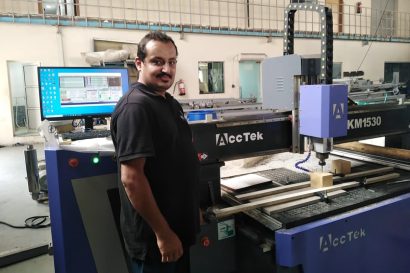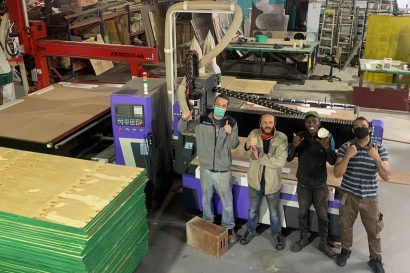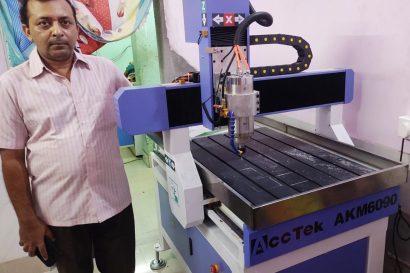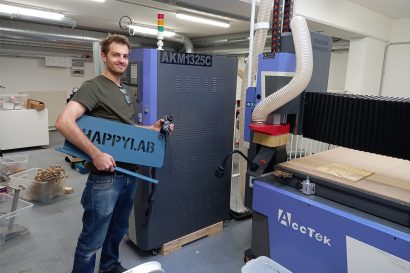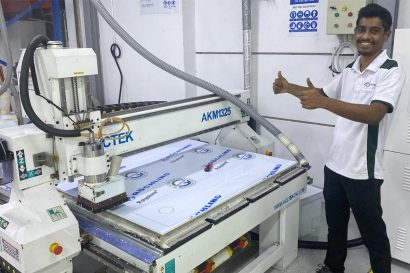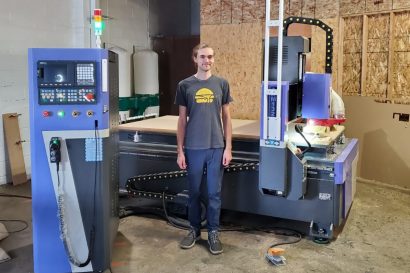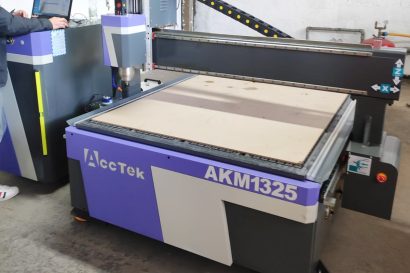MDF CNC Router
The MDF CNC router is a precision machining tool designed to cut and shape MDF sheets. The MDF is a versatile engineered wood product favored for its smooth surface and uniform density, making it ideal for precision machining. The MDF CNC router uses computer numerical control to execute precise and complex designs, increasing production efficiency and precision, thereby transforming digital models into tangible creations. The technology is widely used in the woodworking, furniture making and signage industries, enabling the efficient production of complex patterns and detailed designs on MDF. The MDF CNC router increases productivity, reduces manual labor, and ensures consistent high-quality output in a variety of creative and industrial applications.
Tips For Choosing The Right MDF CNC Router
We’ll guide you through the key considerations for choosing the perfect CNC router for your MDF project. Whether you are an experienced woodworker or just getting started in CNC machining, we can provide insights into key factors such as work area, automatic tool change, cutting speed, accuracy requirements, dust collection, and advanced features.
Working Area
Determine the dimensions of the MDF sheets you typically use and choose a CNC router with the corresponding work area. Make sure the machine’s working area is large enough for your project needs and allows for some maneuverability. When selecting a work area, consider future project needs and scalability.
Automatic Tool Changer
Assess project complexity and diversity. If you frequently work with different cutting tools, consider a CNC router with automatic tool changer (ATC) functionality. This feature allows the machine to automatically change tools during operation, increasing efficiency and reducing downtime. The ATC feature is particularly useful for complex designs that require different cutting tools for various operations.
Cutting Speed Requirements
Evaluate the production speed required for your project. Higher spindle speed helps speed up cutting. Consider a CNC mill with adjustable speed settings to accommodate different materials and cutting requirements. Consider the balance between speed and accuracy to ensure the CNC router can meet your production requirements without sacrificing the quality of the finished product.
Cutting Accuracy Requirements
Define the level of accuracy required for your project. Check the CNC router’s accuracy, repeatability, and resolution specifications. Greater precision helps complete intricate details and designs. Consider factors such as resolution, repeatability, and overall machine rigidity, and choose a machine that meets or exceeds your cutting accuracy requirements.
Dust Removal System
MDF will generate a lot of dust during the cutting process, which will affect the performance of the machine and the working environment. Consider first a CNC router equipped with an efficient dust removal system. A well-designed system will keep the work area clean, enhance visibility, and extend the life of the machine. Look for CNC routers with integrated or compatible dust collection solutions.
Advanced Features
Evaluate whether your project requires advanced features such as 4-axis, 5-axis, rotary axis, or drilling units. These features enable the CNC router to perform more complex operations, expanding the range of projects you can take on. Assess the specific needs of your application and invest in a machine with advanced features that match your design and production requirements.
What Types of MDF Can The MDF CNC Router Cut?
CNC routers can cut various types of MDF, but the density, thickness, and specific characteristics of the selected type need to be considered. Appropriate tools and cutting parameters should be selected based on the characteristics of MDF to achieve accurate, clean cuts. The following are common MDF types that can be machined with a CNC router:
- Standard MDF
- Moisture-Resistant MDF
- Fire-Rated MDF
- Ultra-Light MDF
- Veneered MDF
- High-Density MDF
Application Industry

Construction Industry
The integration of CNC routers into construction workflows has ushered in a new era characterized by meticulous detailing, rapid prototyping, and improved material utilization.

Aerospace Industry
The CNC router is widely used in aerospace engineering due to its unparalleled ability to carve complex designs, manufacture complex parts, and ensure tight tolerances.

Jewelry Industry
The CNC router revolutionize the way fine jewelry is designed and made by delivering unparalleled precision and efficiency and producing intricate designs with meticulous attention to detail.

Stone Carving Industry
The integration of CNC routers into the stone carving industry is not only revolutionizing the way craftsmen carve, it is also redefining the boundaries of artistic possibilities in this ancient practice.
Blog
How to Reduce the Impact of Workpiece Adhesion on CNC Router Cutting Quality
This article delves into practical strategies for mitigating the impact of workpiece adhesion on CNC router cutting quality, to improve the performance and reliability of CNC router operations.
Read More
Addressing Environmental Concerns in CNC Router Waste Disposal: A Comprehensive Guide
In this article, we delve into the considerations for the correct disposal of waste materials from CNC router operations, aiming to tackle the environmental challenges posed by CNC waste.
Read More
Guide to Optimizing CNC Router Parameters for Diverse Materials
This article provides a systematic parameter optimization method for CNC routers cutting different materials, aiming to provide users with the necessary knowledge to achieve excellent processing quality.
Read More
Understanding the Perils of Spindle Runout in CNC Routers
This article delves into the causes of spindle runout and strategies for mitigating its effects, aiming to provide you with the knowledge to optimize CNC router performance.
Read More
Mastering CNC Router Worktables: A Comprehensive Guide
This article delves into the CNC router types, operating methods, maintenance, and customization options, providing you with the knowledge to optimize your CNC router settings for superior results.
Read More
CNC Router Bits: Complete Buyer’s Guide
From understanding the different types of CNC router bits to deciphering the nuances of materials and coatings, this guide provides the essential reference for finding the right bit for your ...
Read More
Frequently Asked Questions
What is the cutting speed of MDF CNC?
The MDF CNC router cutting speeds may vary depending on a variety of factors, including the specific machine, spindle speed, feed rate, and complexity of the cutting operation. Typically, cutting speed is measured in terms of the distance the CNC router travels per minute (in inches or millimeters per minute).
For MDF, typical cutting speeds can range from a few inches per minute for intricate and detailed cuts to hundreds of inches per minute for rough cuts. The spindle speed represents the rotation speed of the cutting tool and is a key factor affecting the cutting speed. Higher spindle speeds combined with appropriate feed rates allow for faster cutting speeds. Additionally, it is crucial to strike a balance between cutting speed and cut quality. Higher cutting speeds can improve production efficiency, but too high speeds may affect the accuracy and finish of MDF cutting.
It’s worth noting that the optimal cutting speed for MDF also depends on the thickness of the material, the type of cutting tool used, and the desired quality of the finished cut. Machinists and woodworkers often experiment with different settings to find the right balance between speed and precision for their specific projects. Therefore, it is recommended to refer to the specifications of the CNC router and consult the machine manual for guidance on adjusting the cutting speed according to the selected MDF type and cutting parameters.
What Router Bit Is On The MDF CNC Router?
The choice of router bit for a Medium-Density Fiberboard (MDF) CNC router depends on the specific cutting requirements and the type of operation you are performing. Here are some common types of router bits used for cutting MDF:
- Spoilboard Cutter: A spoil board cutter is used to level or surface the spoil board (the sacrificial board beneath the workpiece). This helps ensure a flat and even surface for subsequent cuts.
- Straight Router Bits: These bits have a flat bottom and straight cutting edges. They are suitable for general-purpose cutting and are often used for edge profiling, grooving, and dado cuts in MDF.
- Spiral Upcut Router Bits: These bits have a spiral cutting edge that pulls chips upward, making them effective for clean cuts and chip evacuation in MDF. They are commonly used for plunge cutting and creating intricate details.
- Compression Bits: Compression bits have both upcut and downcut sections. The upcut portion is at the bottom, and the downcut is at the top. These bits are useful for preventing chip-out on both the top and bottom surfaces of the MDF, making them suitable for through-cutting applications.
- Downcut Router Bits: These bits have a cutting edge that moves downward, which can help reduce splintering and tear-out on the top surface of the MDF. They are suitable for applications where a clean top surface is critical.
- Ball Nose Router Bits: Ball nose bits are ideal for 3D contouring and carving in MDF, creating smooth curves and intricate designs. They are often used for artistic and decorative applications.
- V-Router Bits: V-bits are commonly used for engraving and V-grooving in MDF. They create precise angles and sharp edges, making them suitable for detailed work.
What is the best MDF for routing?
CNC routers can generally cut various types of medium-density fiberboard (MDF), including:
- Standard MDF: The most common type of MDF, suitable for a wide range of applications in woodworking and CNC routing.
- Moisture-Resistant MDF: This type of MDF is designed to resist moisture and humidity, making it suitable for projects in humid environments, such as kitchens and bathrooms.
- Fire-Rated MDF: Fire-rated MDF is designed to meet specific fire safety regulations and is suitable for applications with strict fire resistance requirements.
- Ultralight MDF: Ultralight MDF is less dense and easier to work with, making it ideal for projects where weight is a concern.
- Veneer MDF: Veneer MDF has a thin layer of solid wood veneer on the surface to provide a beautiful finish. CNC routers can be used to cut and shape veneered MDFs to achieve complex designs.
- High-Density MDF: While there may be some challenges due to increased density, a CNC router with enough power can cut high-density MDF, which is typically used for more robust applications.
How do you cut MDF with a router?
Cutting medium-density fiberboard (MDF) using a CNC router requires programming the machine to follow a precise cutting path based on your design. Here is a step-by-step guide on how to cut MDF using a CNC router:
- Design projects: Use computer-aided design (CAD) software to create or obtain digital designs for your projects. This design will serve as the basis for the CNC router to follow.
- Choose the right CNC router bit: Choose the right router bit for your project. Common choices include a flat nose router bit for straight cutting, a ball nose router bit for 3D contouring, and a V-Router Bit for engraving.
- Secure the MDF material: Use a clamp or vacuum hold-down system to secure the MDF board to the CNC router. Make sure the material is flat and securely fastened to prevent movement during cutting.
- Load CNC program: Load the digital design into the CNC router’s control software. This program contains instructions for the CNC router to follow when cutting MDF, including tool paths and cutting parameters.
- Set the origin and zero point: Establish the starting point (origin) and zero point of the CNC router. This helps the machine position itself accurately. Depending on the capabilities of the machine, the zero point needs to be set using a contact probe or manually.
- Tool path simulation: Before making the actual cut, the tool path needs to be simulated in the CNC software. This includes selecting a cutting strategy, specifying tool details, and determining the depth of the cut to help identify any potential issues and ensure the cutting path is consistent with your design.
- Tool changes (if applicable): If your project involves multiple tools, the CNC router may need to change tools. Make sure the necessary tools are loaded into the machine and the tool-changing process is programmed in the CNC software.
- Run the CNC program: Start the CNC router and monitor the initial number of passes to ensure the tool is cutting as expected. If necessary, adjust the feed rate, spindle speed, and depth of cut.
- Monitor the cutting process: Please pay close attention when the CNC router is performing the cutting process. Check for any issues and be prepared to resolve them promptly.
- Dust collection: Use a dust collection system to minimize dust generation. MDF produces fine particles that can be harmful if not properly controlled.
- Check the finished cut: After the CNC router completes the cutting process, check the accuracy and quality of the finished cut. Grind or polish edges as needed for a polished finish.
- Post-processing: After the CNC router has finished cutting, the finished project is removed from the machine. Sand edges or surfaces as needed to achieve the desired finish.
Does MDF dull router bits?
Yes, MDF can cause router bits to dull over time. MDF is made of wood fibers and resin bonded under high pressure and temperature. While it is a versatile material for woodworking and CNC routing due to its uniform density and smooth surface, it can be abrasive, causing the router bits to wear out faster.
When cutting MDF, several factors can cause the router bit to dull relatively quickly:
- Abrasiveness: The fine particles generated during the cutting process may be abrasive and gradually wear away the cutting edge of the router bit.
- Adhesives: MDF contains adhesives that can cause degradation of cutting tools when heated during cutting.
- High Density: Due to their increased density, certain types of MDF (especially high-density variants) are more difficult for router bits.
- High resin content: The resin in MDF can become sticky and cause material to build up on the router bit’s cutting edge. This accumulation can affect the performance of the bit and cause passivation.
- Temperature rise: Friction generated during the cutting process, especially if the router bit is not properly lubricated or cooled, may cause a temperature rise. The high temperature will accelerate the passivation of the router bit.
- Use carbide router bits: Carbide router bits are generally more durable than high-speed steel router bits and better suited to MDF’s abrasive nature.
- Reduce speed and feed rate: Adjusting the speed and feed rate of the CNC router can help manage heat build-up and reduce wear on the router bits.
- Check your drill bits frequently: Check your router bit regularly for signs of wear, such as blunt edges or chips. Replace the router bit as needed to maintain cutting accuracy.
- Dust removal: Use a dust removal system to remove dust and particles from MDF during cutting, which helps prevent debris from building up on the milling cutter.
- Cooling and Lubrication: Consider cutting fluids or lubricants to reduce friction and heat during routing, which can help extend tool life.
What RPM is needed for CNC cutting MDF?
The recommended spindle speed (measured in revolutions per minute, or RPM) for a CNC router to cut medium-density fiberboard (MDF) may vary depending on factors such as router bit type, bit diameter, specific cutting operation, and characteristics of MDF in use. However, a general guideline is to use a low to mid-range spindle speed for cutting MDF.
As a starting point, you might consider a spindle speed in the 12,000 to 18,000 RPM range when cutting MDF with a standard mill. Smaller diameter drill bits can tolerate higher speeds, while larger diameter drill bits may require slower speeds to avoid excessive heat build-up.
Here are some general tips:
- Router bitdiameter: Smaller diameter drill bits can generally handle higher RPMs, while larger diameter drill bits may require lower RPMs to prevent overheating.
- Cutting depth: Adjust the cutting depth according to the function of the CNC router and the type of cutting operation. It is generally recommended to perform multiple passes with gradually increasing depth of cut.
- Manufacturer recommendations: Refer to the recommendations provided by the CNC router and the manufacturer of the milling cutter you are using. These guidelines often include optimal rpm settings for various materials and drill bit types.
- Material properties: The density and composition of MDF affect ideal cutting parameters. Softer MDF may require different speeds than denser variants.
- Test cuts: Making test cuts on MDF scraps can help you fine-tune your cutting parameters to ensure the best results for your specific setup.

